An unprecedented UFO report and other moments from 2023 that rivaled science fiction
- Oops!Something went wrong.Please try again later.
- Oops!Something went wrong.Please try again later.
Sign up for CNN’s Wonder Theory science newsletter. Explore the universe with news on fascinating discoveries, scientific advancements and more.
This year held some truly out-there moments in the world of science and space travel.
With SpaceX’s Mars rocket erupting into a ball of flames over the ocean (twice) and a spacecraft swinging by Earth to drop off pieces of an asteroid that could contain solar system secrets — some events felt ripped from the pages of a science fiction novel.
These moments came as humanity embarks on a new push to explore the cosmos, both with scientific instruments on the ground and spacecraft among the stars.
The renewed effort not only comes from NASA and the US government but also from countries such as India and China. And there’s massive investment from private-sector businesses across the globe as well, a unique feature of the 21st century space race.
Here’s a look back at some of the biggest pinch-me moments in outer space from 2023.
The most powerful rocket ever constructed launches and explodes. Twice
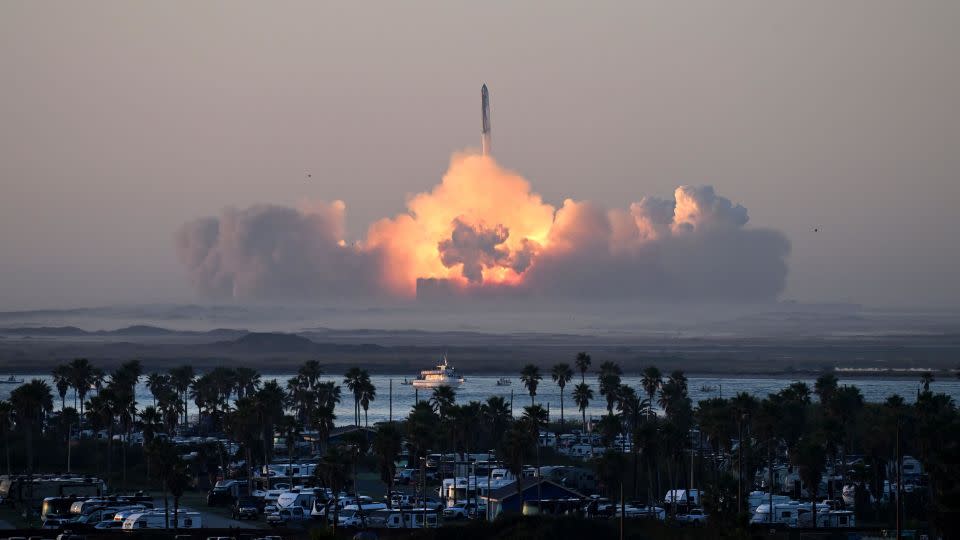
SpaceX’s Starship, the rocket and spacecraft system that CEO Elon Musk envisions will carry the first humans to Mars, made two historic flight attempts this year.
The first, in April, ended when the vehicle began tumbling out of control, and SpaceX was forced to destroy it.
The second attempt, in November, saw the 400-foot (120-meter) vehicle make it much farther into flight — successfully firing all its engines and reaching outer space. But both the Starship spacecraft and rocket booster ultimately exploded.
The test launch mishaps weren’t huge setbacks for SpaceX. The company is known to embrace fiery failures in the early stages of rocket development.
But a lot is riding on Starship’s eventual success.
SpaceX is racing to get the vehicle ready to land astronauts on the moon for NASA as early as 2025. And Musk envisions Starship will put boots on Mars by 2029.
Starship remains controversial among some local residents in South Texas, where SpaceX has a private spaceport, after the company’s operations raised concerns about its environmental impact. Meanwhile, Musk — the owner and face of SpaceX — has found himself steeped deeper in unrelated controversy in 2023.
Moon landings: Failures and successes
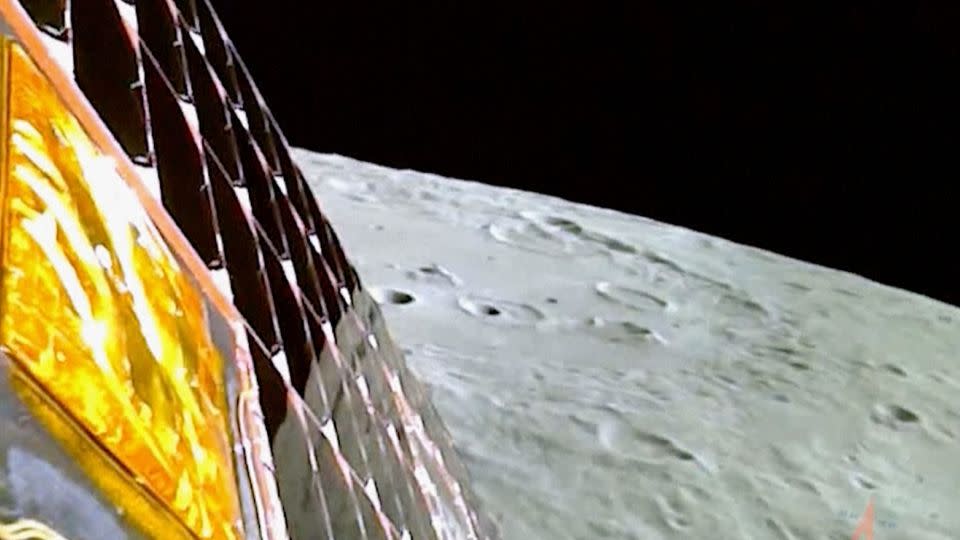
A new moon race is underway, and the participants so far have been robotic.
Mad dashes for the lunar surface kicked off in April when a private Japanese company, Ispace, attempted to land the first commercial vehicle — the Hakuto-R lander — on the moon. It ultimately crash-landed.
Russia’s space agency, Roscosmos, followed with yet another blunt force impact when its Luna-25 mission crashed into the moon’s surface in August.
India’s space agency then swooped in days later with the successful touchdown of the Chandrayaan-3 lunar lander on August 23.
India became the fourth county to successfully land a spacecraft on the moon, following the United States, the former Soviet Union and China. India also became the first country to land a spacecraft in the moon’s south pole region.
So far in the 21st century, only China and India have had successful lunar landings. (Russia and the United States haven’t been back to the moon since the 1970s.)
The Japan Aerospace Exploration Agency, or JAXA, also has a spacecraft headed for the lunar surface, with a landing attempt expected early next year.
Leaking spacecraft forced an astronaut to spend a year in space
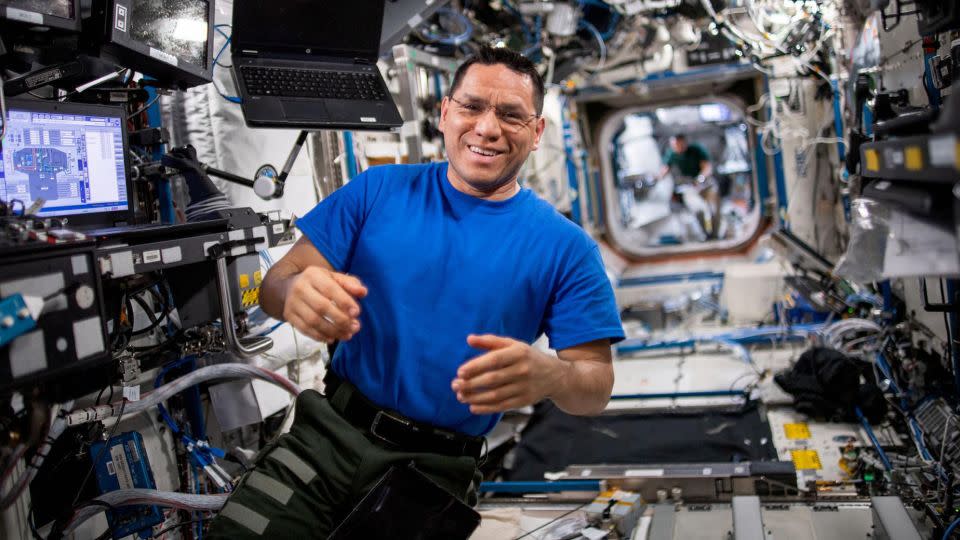
NASA astronaut Frank Rubio expected to spend six months on the International Space Station.
But the Russian Soyuz spacecraft that carried him and two cosmonauts to the orbiting outpost in September 2022 sprang a coolant leak late that year. Russia was forced to send a replacement ride, and it delayed Rubio’s return by six months.
He touched back down on terra firma in September, logging 371 days in orbit — longer than any US astronaut has ever stayed in microgravity.
Rubio was candid about the arduous journey, noting that he “probably would have declined” the mission if he had known he would be stuck in space so long. But he said he spent only one day mourning the lost time on Earth before refocusing on the mission.
Now part of US space travel history, Rubio was also at the center of a lighthearted “scandal.” In the spring, he harvested one of the first tomatoes ever grown in orbit. After losing it on board the station, he faced some suspicion about whether he had eaten the valuable produce.
Colleagues exonerated Rubio in December, months after his departure, when they revealed they had located the missing tomato.
Space tourism kicks into high gear
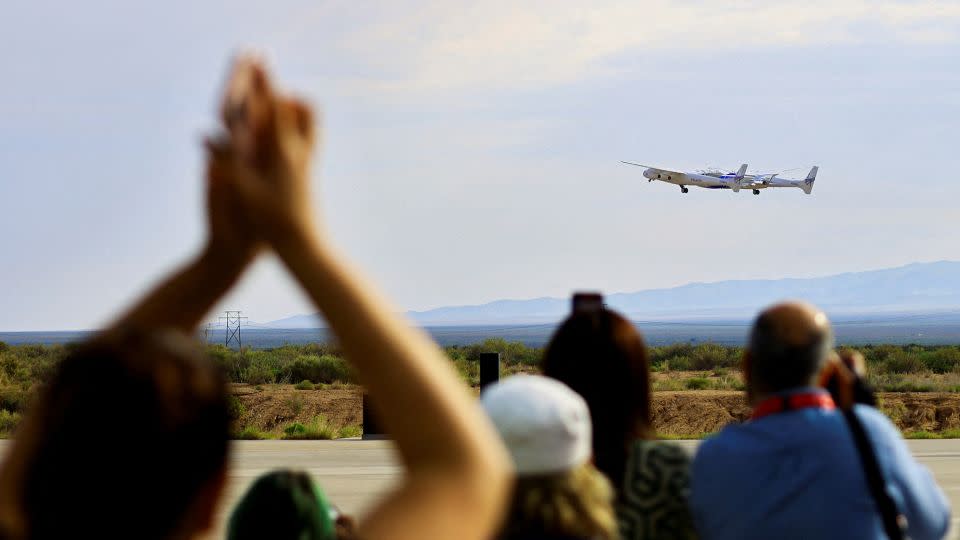
The world has rapidly entered an era in which a trip to space is possible for anyone who can afford it.
Space tourism kicked off in 2023 with the Axiom-2 mission, which launched in May, carrying decorated former NASA astronaut Peggy Whitson and three customers to the International Space Station. The crew included two astronauts from Saudi Arabia, which financed their travel, as well as John Shoffner, an American who made his fortune in the international telecom business.
It marked the private sector’s second mission to the orbiting laboratory. And similar trips — estimated to cost about $55 million per seat — are expected in upcoming years.
Meanwhile, Virgin Galactic, the space tourism venture founded by British billionaire Richard Branson, began offering regular trips to the edge of space for wealthy thrill seekers — finally delivering on its promises after two decades.
In 2023, Virgin Galactic made six trips to the edge of space with its suborbital rocket-powered space plane, carrying company employees, test pilots and customers. Its flights cost about $450,000 per seat (though some early ticket purchasers spent less).
Meanwhile, Jeff Bezos’ space tourism company, Blue Origin, just got its suborbital rocket back in the air after the 2022 failure of an uncrewed rocket on a science mission.
NASA picked astronauts who will fly by the moon
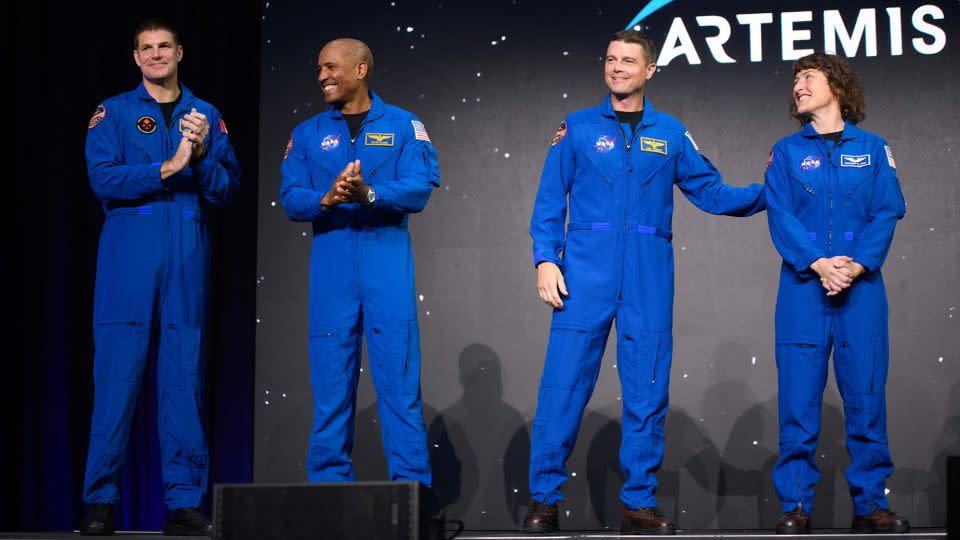
The four astronauts who will helm the first crewed moon mission in five decades were revealed in April. The historic Artemis II lunar flyby is set for takeoff in November 2024.
The astronauts are NASA’s Reid Wiseman, Victor Glover and Christina Koch and the Canadian Space Agency’s Jeremy Hansen.
“It’s so much more than the four names that have been announced,” Glover said during an April 3 announcement ceremony at NASA Johnson Space Center in Houston. “We need to celebrate this moment in human history. … It is the next step in the journey that will get humanity to Mars.”
The Artemis II lunar flyby is expected to be the first crewed journey in a long line of missions that NASA has planned, including the establishment of a permanent outpost on the moon where astronauts can live and work. Eventually, the space agency hopes those efforts will pave the way for crewed missions to Mars.
NASA releases its first UFO report
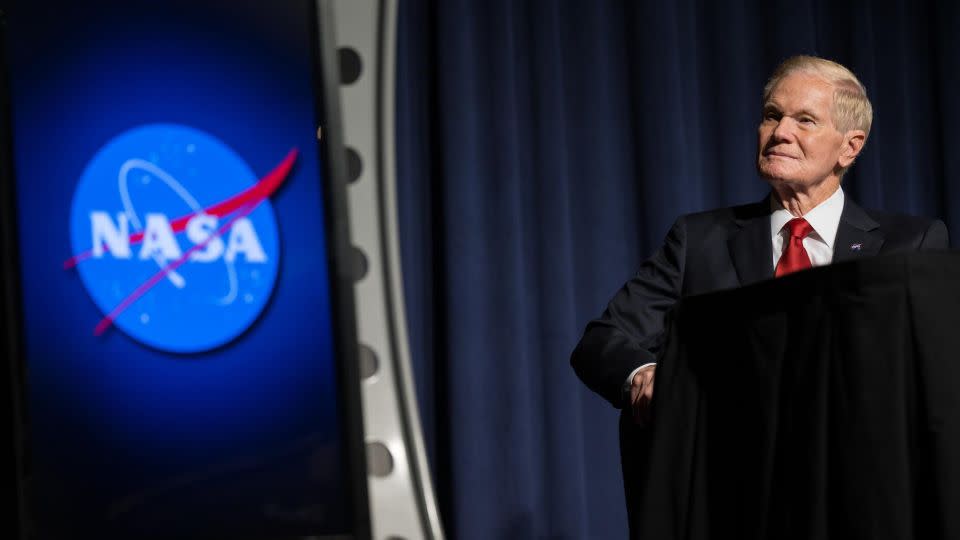
The US space agency made history when it set up a team of experts to study unidentified anomalous phenomena, or UAPs — more commonly referred to as UFOs. And the group revealed its first findings in a September report.
The group sought to determine whether and how the mysterious phenomena can be studied scientifically.
“Recently, many credible witnesses, often military aviators, have reported seeing objects they did not recognize over U.S. airspace,” the report noted. “Most of these events have since been explained, but a small handful cannot be immediately identified as known human-made or natural phenomena.”
The group found no hard evidence that the unexplained occurrences come from intelligent alien life.
But the report said that NASA should use satellites and other instruments — including artificial intelligence and machine learning — to seek more information about the phenomena.
In response, NASA announced it was appointing its first director of UAP research, with the agency’s chief saying the move was the first concrete step NASA had ever taken to seek an explanation for UFOs.
These developments came as the US Defense Department races to get a handle on the phenomena, with the Pentagon receiving dozens of UFO reports each week.
OSIRIS-REx’s special delivery
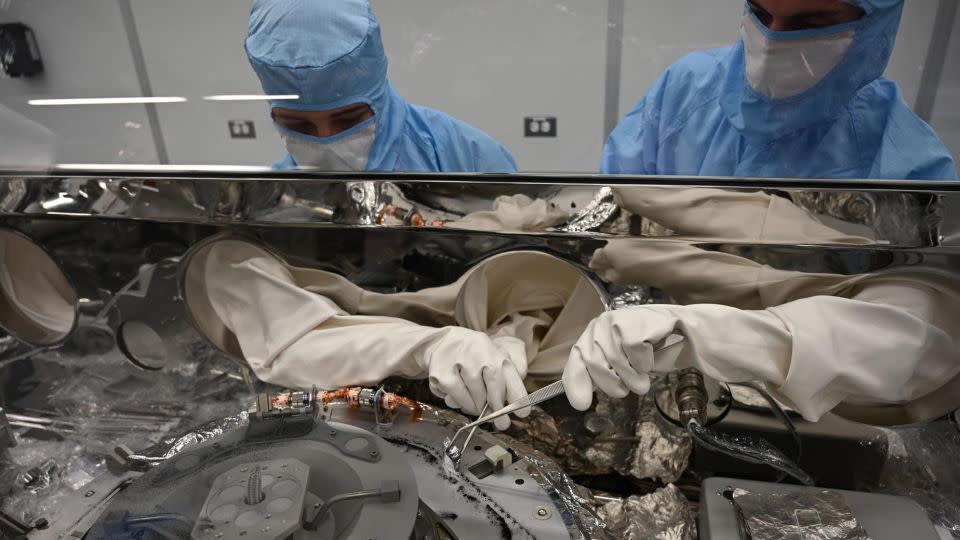
In September, an out-of-this-world delivery landed in the Utah desert, and the contents of the capsule have presented astronomers with a cosmic puzzle they will be piecing together for years.
After successfully collecting a sample from the near-asteroid Bennu in 2020, NASA’s OSIRIS-REx mission safely dropped off the capsule containing the precious rocks and dust within as it flew by Earth on September 24. It wasn’t long before scientists realized the capsule contained a wealth of material that exceeded their goals.
A preliminary analysis revealed that the rocks and dust contain water and a large amount of carbon, suggesting that asteroids may have delivered the building blocks of life to Earth.
And it’s just the first of many insights waiting to be teased from the asteroid sample. The interior of the canister contains “a whole treasure chest of extraterrestrial material,” said OSIRIS-REx principal investigator Dante Lauretta.
Meanwhile, the newly named OSIRIS-APEX mission continues flying through space, ready to rendezvous with the asteroid Apophis during the space rock’s close approach of Earth in 2029.
Space rock surprise

The small asteroid Dinkinesh was only meant to test the systems aboard NASA’s Lucy spacecraft as the mission zooms on its way to survey the swarms of Trojan asteroids around Jupiter in the late 2020s. But the space rock was full of surprises that continue to intrigue astronomers.
Lucy flew by Dinkinesh, located between the orbits of Mars and Jupiter, on November 1. In the days following the flyby, images captured by the spacecraft were returned to Earth — and they revealed that Dinkinesh is orbited by a smaller asteroid that is a contact binary, or two small space rocks that touch each other.
“It’s truly marvelous when nature surprises us with a new puzzle,” said Tom Statler, Lucy program scientist at NASA, in a statement. “Great science pushes us to ask questions that we never knew we needed to ask.”
Dinkinesh, which means “marvelous” in the Amharic language of Ethiopia, is truly living up to its name.
For more CNN news and newsletters create an account at CNN.com

